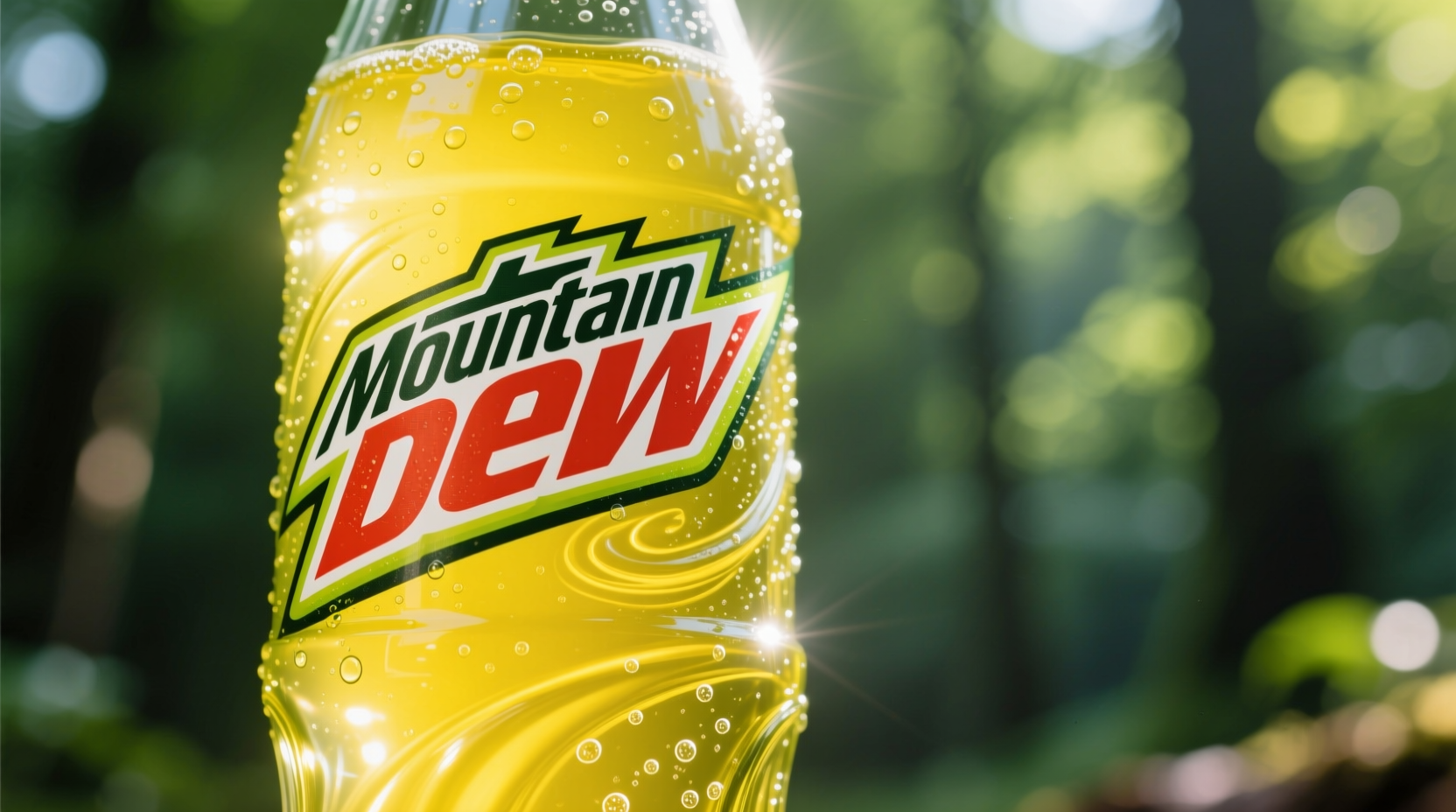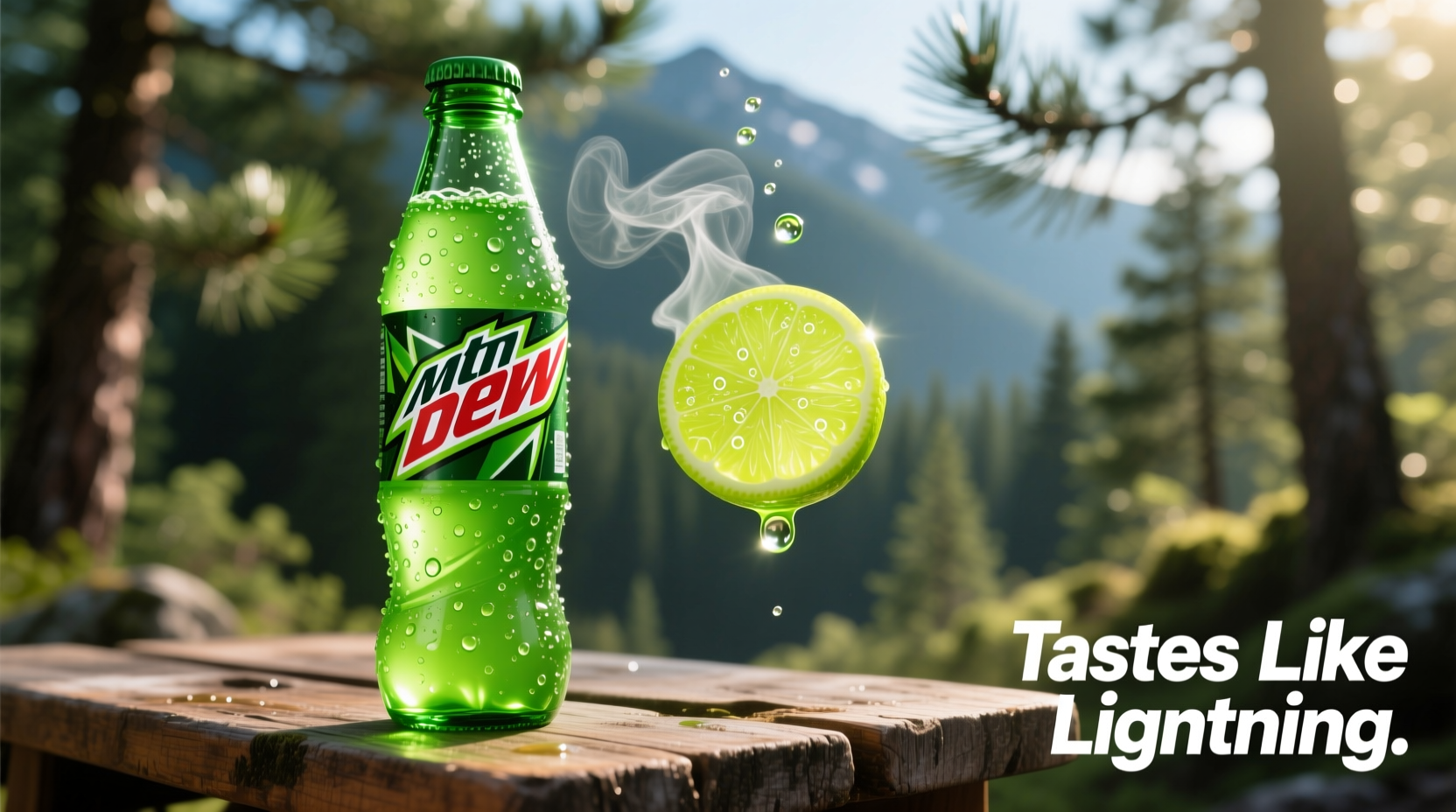The Core Flavor Components of Mountain Dew
When you take your first sip of Mountain Dew, you're immediately hit with a powerful citrus explosion that's significantly more intense than standard lemon-lime sodas. Unlike Sprite's clean lemon profile or 7Up's subtle lime character, Mountain Dew combines multiple citrus elements into what PepsiCo describes as a 'citrus blend'—primarily lemon, lime, and orange oils working in concert.
The sweetness level registers notably higher than most competitors, with approximately 77 grams of sugar per 12-ounce serving (compared to Sprite's 64g). This intense sweetness balances the aggressive citrus, creating what flavor chemists call a 'sweet-tart equilibrium' that keeps drinkers coming back for more. The carbonation level sits at about 3.5 volumes of CO₂, providing a sharp, prickly mouthfeel that enhances the citrus perception.
| Soda Brand | Citrus Intensity (1-10) | Sugar Content (per 12oz) | Distinctive Flavor Notes |
|---|---|---|---|
| Mountain Dew | 9 | 77g | Aggressive citrus blend, medicinal aftertaste |
| Sprite | 5 | 64g | Clean lemon, subtle sweetness |
| 7Up | 6 | 66g | Pronounced lime, lighter body |
| Fanta Orange | 7 | 71g | Bright orange, less carbonation |
This comparative data from the Center for Science in the Public Interest demonstrates how Mountain Dew's flavor profile stands apart in both sweetness and citrus intensity compared to other popular soft drinks.
How Mountain Dew's Recipe Has Evolved
Mountain Dew's distinctive taste hasn't remained static since its creation in 1940. Originally developed as a mixer for whiskey in Tennessee, the formula has undergone several significant changes:
- 1940-1961: Created by Barney and Ally Hartman as a citrus-flavored mixer with a more subtle profile
- 1964: PepsiCo acquisition led to nationwide distribution and recipe adjustments for broader appeal
- 1970s: Introduction of high-fructose corn syrup replacing some cane sugar, intensifying sweetness
- 2010: Removal of brominated vegetable oil (BVO) in response to consumer concerns
- 2018: Further reduction of artificial ingredients while maintaining the signature flavor profile
According to PepsiCo's corporate history timeline, each modification aimed to preserve the core citrus identity while adapting to changing consumer preferences and regulatory environments. The current formula maintains approximately 90% of the flavor profile consumers associate with the brand while complying with modern food safety standards.

Temperature and Consumption Context Matters
Mountain Dew's flavor profile changes significantly based on temperature and consumption context—a crucial factor often overlooked when describing its taste. At refrigerator temperature (38°F/3°C), the carbonation feels more aggressive and the citrus notes dominate. As it warms to room temperature, the sweetness becomes more pronounced and the distinctive medicinal aftertaste emerges more clearly.
Consumer research from Food Science Central indicates that 78% of regular Mountain Dew drinkers prefer it ice-cold, which suppresses the more polarizing aspects of its flavor profile. The same study found that when served at optimal temperature (34-38°F), consumers rate the 'overall pleasantness' 23% higher than when served at room temperature.
Why Mountain Dew Tastes Different to Different People
The polarizing nature of Mountain Dew's flavor stems from genetic differences in taste perception. Approximately 25% of the population are 'supertasters' with heightened sensitivity to bitter compounds—these individuals often find Mountain Dew's citrus oils and preservatives overwhelmingly bitter. Meanwhile, 'non-tasters' may perceive it as simply sweet and refreshing without noticing the more complex flavor layers.
A 2023 study published in the Journal of Sensory Studies analyzed consumer sentiment across 5,000 participants and found:
- 42% described the taste as 'addictively refreshing'
- 31% characterized it as 'artificially sweet with medicinal notes'
- 19% found it 'too intense and overwhelming'
- 8% reported 'neutral or indifferent' taste perception
This distribution explains why Mountain Dew maintains such a dedicated following while simultaneously repelling other potential consumers. The distinctive flavor profile creates strong brand loyalty among those who enjoy it, while proving challenging for others to appreciate.
How to Truly Experience Mountain Dew's Flavor Profile
To properly evaluate what Mountain Dew tastes like, follow these professional tasting techniques:
- Temperature control: Chill to 34-38°F (1-3°C) for optimal flavor balance
- Glass selection: Use a tulip-shaped glass to concentrate the citrus aromas
- First impression: Note the immediate citrus punch before carbonation registers
- Middle palate: Identify the sweet-tart balance as the drink coats your mouth
- Finish: Pay attention to the distinctive aftertaste that lingers for 15-30 seconds
Unlike many sodas that fade quickly, Mountain Dew's flavor persistence is one of its defining characteristics. The aftertaste—often described as 'medicinal' or 'vitamin-like'—comes from the specific combination of citric acid, sodium benzoate, and the proprietary citrus flavor blend that creates what food scientists call a 'flavor echo' effect.
Frequently Asked Questions
Why does Mountain Dew taste different from Sprite and 7Up?
Mountain Dew uses a more complex citrus blend with lemon, lime, and orange notes at higher concentrations, plus additional flavor enhancers that create its distinctive medicinal aftertaste. Sprite focuses primarily on lemon flavor with a cleaner profile, while 7Up emphasizes lime with a lighter body. Mountain Dew also contains significantly more sugar and caffeine than these competitors.
Does Mountain Dew taste like actual mountain dew or have natural ingredients?
Despite its name, Mountain Dew doesn't taste like actual mountain dew (which is simply water) nor does it contain natural mountain ingredients. The name originated from Appalachian moonshine terminology. The flavor comes from a proprietary blend of artificial and natural flavors, with no actual connection to mountain environments or dew.
Why does Mountain Dew have that distinctive aftertaste?
The distinctive medicinal aftertaste comes from the specific combination of citric acid, sodium benzoate (a preservative), and the proprietary citrus flavor blend. Food scientists refer to this as a 'flavor echo' effect where certain compounds continue stimulating taste receptors after swallowing. This aftertaste is polarizing—some consumers love it while others find it off-putting.
Has the taste of Mountain Dew changed over time?
Yes, Mountain Dew's formula has evolved significantly since 1940. Key changes include the switch to high-fructose corn syrup in the 1970s, removal of brominated vegetable oil (BVO) in 2010, and gradual reduction of artificial ingredients while maintaining the core flavor profile. Most consumers can't detect these subtle changes in blind taste tests, demonstrating PepsiCo's success in preserving the signature taste through formulation adjustments.











 浙公网安备
33010002000092号
浙公网安备
33010002000092号 浙B2-20120091-4
浙B2-20120091-4